Will there ever be a level playing field in visually impaired sport?
In visually impaired cricket, gossip and the rumour of cheating is commonplace. One player in our research admitted ‘it seems to be a real culture in this sport’
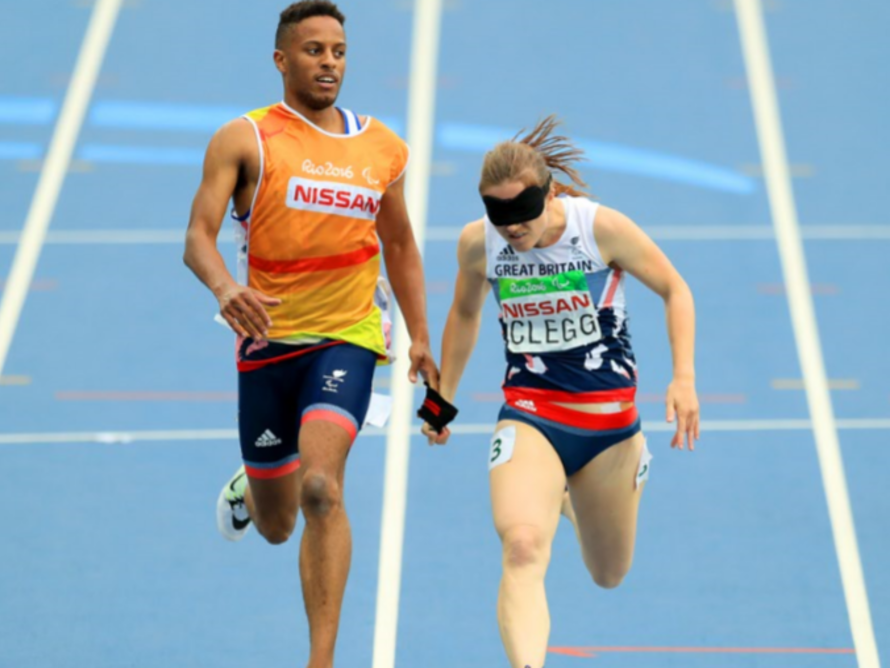
The World Para Athletics Championships currently taking place in London feature ten eligible impairment types: intellectual, visual and eight physical. Public understanding of the issue has grown through media reporting and LEXI – the revolutionary system used by Channel 4 which explains the different classifications. But very little is known about the actual process and the implications for athletes. In visually impaired (VI) sport, the organisation of different “classes” for international competition is complex and vary wildly across the disciplines. The question is: is a “level playing field” achievable?
In VI sport, all athletes undergo the process of classification in an attempt to ensure equitable competition. Medical assessment of the two main measures of sight – visual acuity and visual field – determines athletes’ visual ability and in which class they are eligible to compete. The different classes within VI sport are B1, B2 and B3. The most visually impaired athletes fall into B1.
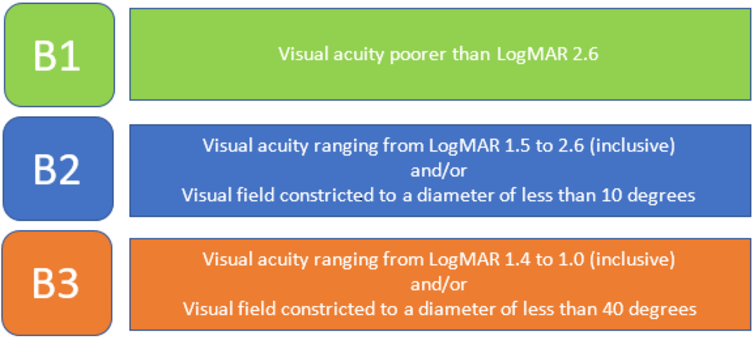
In athletics, these three classes equate to T11/F11, T12/F12 and T13/F13, respectively, with T referring to track events and F to field events. Because the majority of athletics events are individual, the organisation of VI athletics is relatively straightforward, with athletes competing only against those in the same class. T/F11 athletes are required to wear opaque glasses to block out any light and ensure fair competition. Running with a guide is mandatory for athletes in the T11 class and optional for T12 and there are specific rules for the only team event, the 4x100m relay.
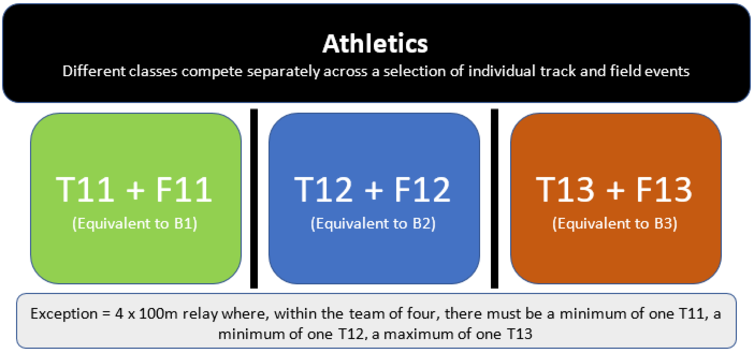
In football, international competition is organised into either blind football (B1s only) or partially sighted football (B2s and B3s). In partially sighted football, a quota system operates limiting the number of B3s on the pitch at any time.
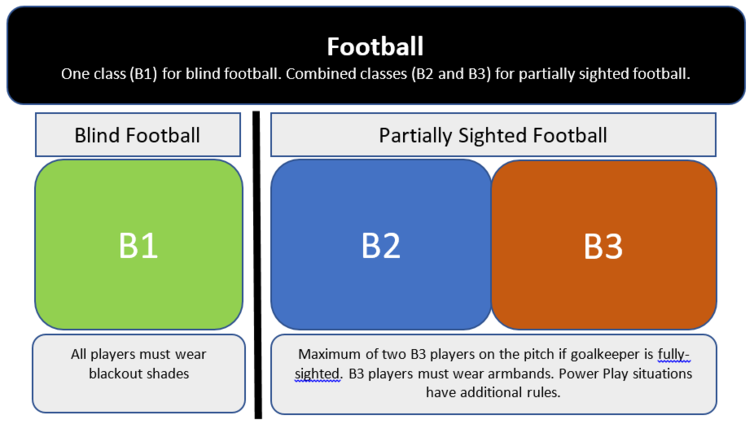
At the UK domestic level, the Partially Sighted Football League and the Blind Cricket England and Wales National League also allow players classified as B4 (typically less than 25 per cent of normal vision) – but they are not eligible to compete internationally. In comparison to athletics and football, VI cricket is uniquely made up of both blind and partially sighted players. International cricket also operates a quota system with specific rules relating to batting and bowling for B1 players.
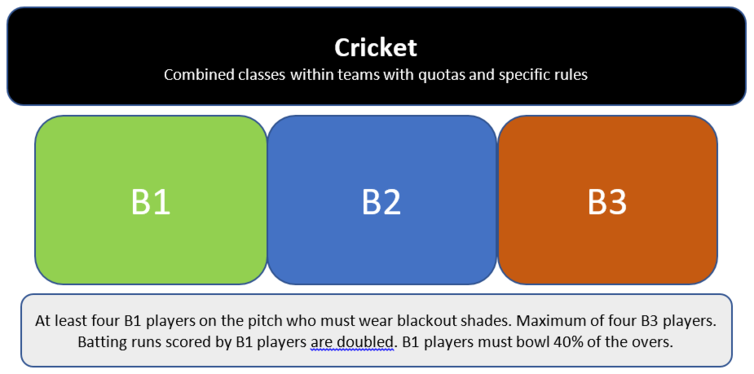
What are the issues?
One major problem is that there will always be athletes on the margins of two different classes. One football player in our research argued that due to the broad spectrum of visual impairment across B2 players, the grouping of B2s and B3s at international level is “fundamentally discriminatory with virtually no opportunities for those with a great deal of talent but with poor vision not low enough to qualify for B1 status”.
The FA has tried to address this by allowing these players to participate in the National Blind Football League within the UK as “B1b” athletes. But they are not eligible to compete in international blind football and effectively have no opportunity to progress to elite level in partially sighted football.
In international athletics competitions, such as the Paralympics and World Para Athletics Championships, not all events are open to all visually impaired classes. There are also more events for visually impaired men than women. For example, the 5,000m event is open to T11 and T13 men but not T12 men or any visually impaired women. One reason for this is there are not enough international athletes to make up a competitive event.
Within the Paralympics, the issue is also affected by politics. When the International Olympic Committee (IOC) and International Paralympic Committee (IPC) formalised ties in 2001, the IOC required that “the Paralympic Games be restricted in size to 4,000 athletes”. This was an attempt to streamline it and make it more marketable. Although London 2012 and Rio 2016 both exceeded 4,000 athletes, the fact is that some visually impaired events remain closed to certain classes and women. This, arguably, goes against the IPC aspiration “to make for a more inclusive society for people with an impairment through Para sport”.
Exploitation, gossip and rumour
UK Athletics’ recent admission that current classification rules can be exploited comes as no surprise to those involved in disability sport.
In visually impaired cricket, gossip and the rumour of cheating is commonplace. One player in our research admitted “it seems to be a real culture in this sport”. Accusations are aimed at opposition players but also between teammates who may be challenging for the same position in the squad. Despite the claims, none of the players we interviewed could provide specific examples of guilt.
We believe the underlying reason behind such accusations is the classification system itself. This medicalised process creates a bodily “status-quo”. When breached, through a high level of performance, some players use gossip and rumour as a form of self-defence to tarnish more proficient performers as cheats.
The various stakeholders in disability sport have a considerable challenge on their hands when it comes to classification. As we have shown by highlighting just some of the issues across only three sports, classification can present a range of problems for visually impaired athletes. The extent to which the process will ever be able to guarantee fair and equitable competition remains to be seen.
Jessica Louise Macbeth is a senior lecturer in sports studies at the University of Central Lancashire; Ben Powis is a lecturer in football studies at Southampton Solent University. This article was originally published on The Conversation (www.theconversation.com)
Join our commenting forum
Join thought-provoking conversations, follow other Independent readers and see their replies
Comments